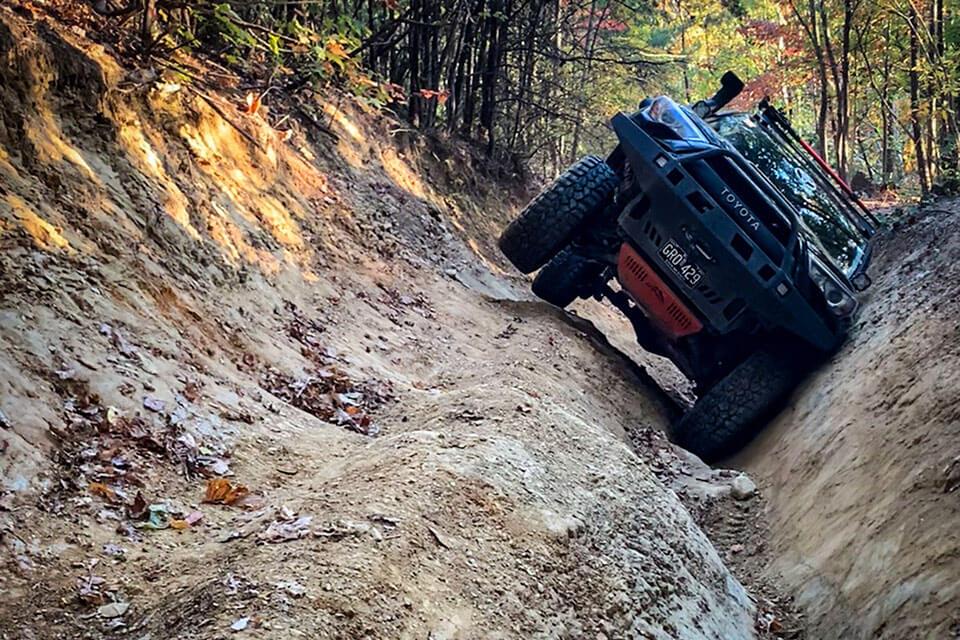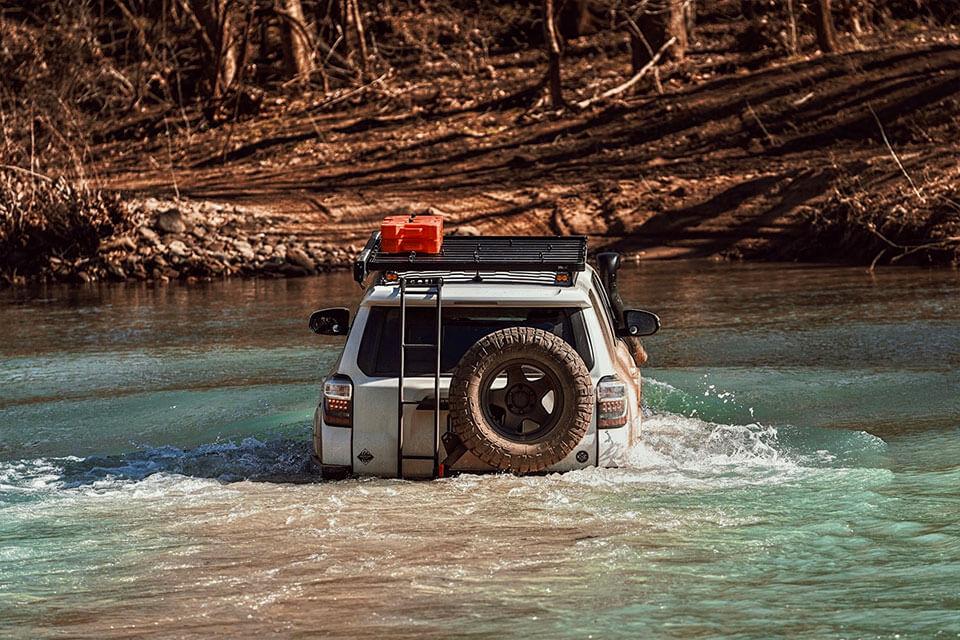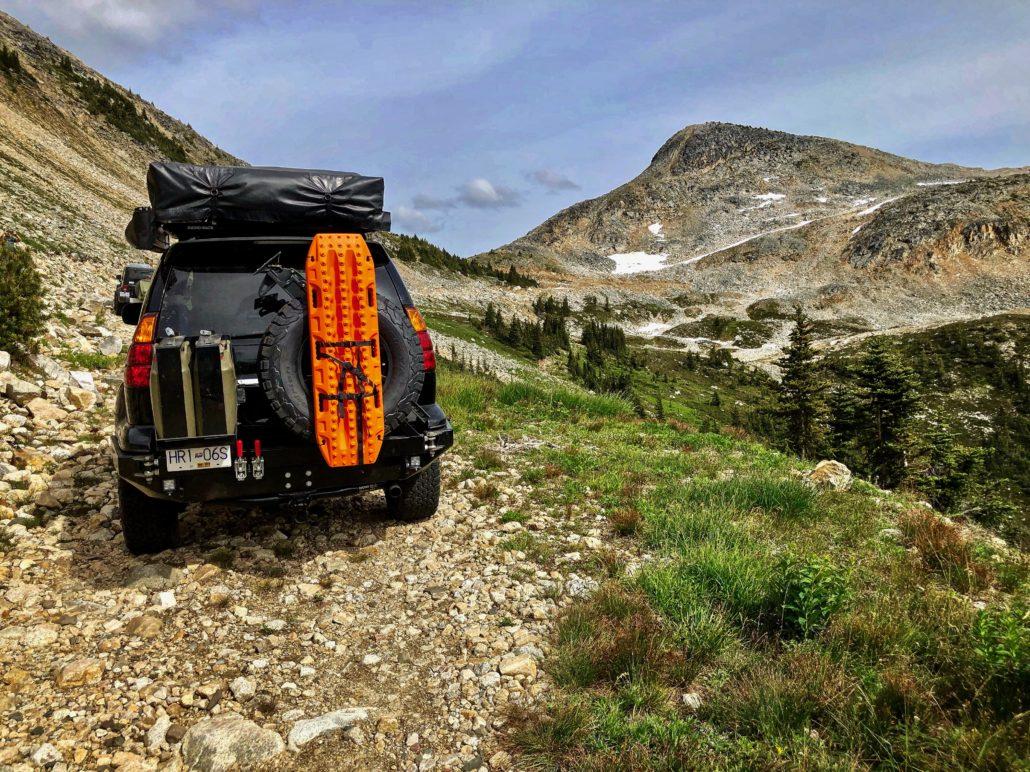#1 Battery Jump-starTer
IIt's easy to get carried away with plugging a lot of extra gear into your offroad vehicle. Air compressor, lights, radio, and navigation; they can add up quickly and this can lead to unexpected drains on your battery. But what happens when you pull up to the lake and start barbecuing, forgetting that these accessories are still on? If no one is around to give you a jump start when its time to leave, this can be a big problem. There's nothing worse than walking 30km out of the bush because of a mechanical as simple as a dead battery, especially if you've brought guests with you! Avoid the issue by keeping a battery jump-starter and jumper cables with you. These items are inexpensive and can be found at almost any auto parts store. Just be sure to check that the battery jump-starter is charged before you go. I can't even count how many times I've used this item to help other drivers, both on the trail and at the mall.
#2 Lighting
There are several types of lights that you should have with you on your off-road adventures, starting with a work light. Even if you don’t plan on being out after dark, we all know how many wheeling days don't end up going to plan due to mechanical breakdown or just a new trail that you find and just have to explore. If you have to make an emergency repair in the dark, you'll be glad you decided to pack work lighting. Work lights are lightweight and take up barely any space, so don't leave home without one!
Look for a work light that has hands-free functionality, whether it is wearable or attaches to a convenient spot on your 4WD vehicle. Also pay attention to the light output, as you need to make sure the light serves its purpose.
You may also want to consider a floodlight or other type of area lighting that attaches to your vehicle. These type of lights use your vehicle’s power, so you don’t have to worry about charging them. They will not only light up the space while you work on your 4WD, but they can also illuminate a campsite. Just make sure that you have your jump starter pack with you if you plan to run the lights without the vehicle engine running!
#3 Maps AND Other Navigation Equipment
Even if you are familiar with the route you plan on taking, it is always smart to have maps and a compass with you. You could also opt for a GPS, assuming you have one that includes all the small offroad trails on it. There are many great GPS apps that will run off your smartphone and provide a great low-cost alternative to buying a standalone GPS unit. If you use digital maps, just make sure they are saved offline, as you will quickly lose signal when in remote areas. It is also smart to always have a paper backup in case your GPS or phone loses power.

#4 Mechanic Tool Set
If you go off-roading , then you are hopefully familiar with doing minor repairs to your vehicle. Keeping a mechanic tool set on hand will ensure that you have the tools to make those repairs. The goal is assemble a tool kit that will prepare you for nearly any possible mechanical repairs. The more variety in the kit, the better. Stay tuned for our article on exactly what to include in your trail mechanical tool set! At the very least, you want to have socket wrenches, screwdrivers, and an offroad jack.
#5 Recovery Strap or Rope
Sometimes, your vehicle just can’t get enough traction to get out of the mud, sand, or a steep incline. In these cases, traction boards can help, but a recovery strap or rope is often the best solution. Even if you have a Coastal Offroad bumper and recovery winch installed, a recovery strap will extend your winch range. It's shocking how quickly a 100ft winch line runs out of length when there are no anchor points close by! Carrying a couple recovery straps will greatly increase your winching range and ensure that you can handle nearly any stuck situation.
Always opt for a heavy-duty recovery rope, ideally one rated for at least 10,000 pounds, if not more. If your 4WD is extra-heavy due to gear and modifications, make sure your chosen rope can handle the weight. Ideally, it should handle several times the vehicle’s weight. In a pinch, you can even make a winch out of the recovery strap with some help from your tire!
#6 Winch and Recovery Shackles
Especially if you like to travel alone, your vehicle should have a recovery winch fitted onto it. With a winch mounted to a solid platform such as a Coastal Offroad bumper, you will be able to tackle challenging terrain with a new level of confidence. Even if you are traveling with other vehicles who could give you a tug should you get stuck, this can be useless if the trail is narrow and they cannot get into the right position to help you. You also cannot beat the slow, controlled pull from a winch in those especially steep, difficult trail sections where a roll-over is possible. Why risk unnecessarily damaging your offroad vehicle when you can pull yourself to safety with a winch? To go along with this, you should also carry at least 2 recovery shackles so that you can attach the winch cable to the vehicle.

#7 Spare Tire and Tire Repair Supplies
One of the most important items to carry with you on the trail is a spare tire. Ensure that it is in acceptable condition and inflated to the correct air pressure for the trail. A full-size spare tire is not essential, but it is preferable if you do a lot of challenging offroad driving.
Another offroad essential is a tire repair kit. You can either buy a pre-made kit or create your own. Just make sure you have things like spare valves, rope plugs, and Fix-a-Flat. These are a last-resort fix, and you really just need to make the repair good enough to get you out of the back country.
#8 Air Compressor and Tire delator
Use an offroad tire deflator tool with a pressure gauge to lower your tires to offroad pressure quickly and accurately. From beginners to seasoned veterans, the single most important adjustment to make to your vehicle when hitting the trails is the tire pressure. Reducing your tire pressure will greatly increase the traction and capability of your vehicle. Many people are shocked by how offroad-capable even a bone stock 4WD vehicle can be once the tires are aired down. It also makes for a much more comfortable ride and reduces stresses on your suspension by letting the soft tires do a lot of the work. Finally, it greatly reduces the chances of a flat tire by letting the tires deform around obstacles rather than puncture.
The ideal pressure will depend on the terrain, your tire size, and your vehicle weight. However, we recommend 18psi as a good starting point. As you gain more experience, you may experiment with going down as low as 10 PSI. But beware, as going too low can result in the tire separating from the rim. While these are great pressures for hitting the trail, you need to refill your tires before you get back on the paved road, which is where an air compressor comes in.
Compressors come in various configurations, capacities and mounting styles. Go with one that connects directly to your battery. They can either be hard-wired into your vehicle and mounted in the engine bay or interior. Or you can use a portable compressor that is stored in the back of the vehicle and only brought out when needed. We recommend purchasing the fastest compressor that you can afford, as waiting around for a slow compressor to fill large offroad tires gets old pretty quickly!
#9 Traction Boards/Mats
At some point, you will get stuck in a situation where there are no anchor points or other vehicles around to help you get unstuck with a winch or recovery strap. This is where traction boards and mats can save the day. These get placed under your slipping tires and bite into the soft mud, snow or sand to give you traction again. Just make sure your traction mats are well-made. You don’t want them ripping or breaking when it comes time to use them.
Ask us about our mounting solutions for storing traction boards on our swing out carrier systems!

#10 Work Gloves
No matter the types of repairs or recoveries you need to make on your offroad trip, you will appreciate having a sturdy pair of work gloves. They will protect your hands from sharp edges, grease and dirt and are especially important when working with steel winch cables. The best options are heavy-duty and feature leather palms with plenty of traction.
I hope you found this list to be a helpful starting point for preparing for your next offroad adventure. Most of the items on this list can be obtained for quite a low cost. They will immediately pay for themselves the first time you get into a situation in the backcountry and are glad you came prepared!





